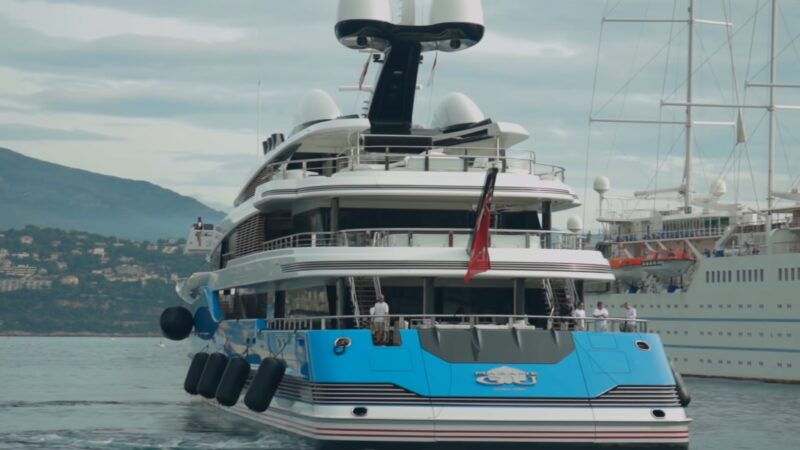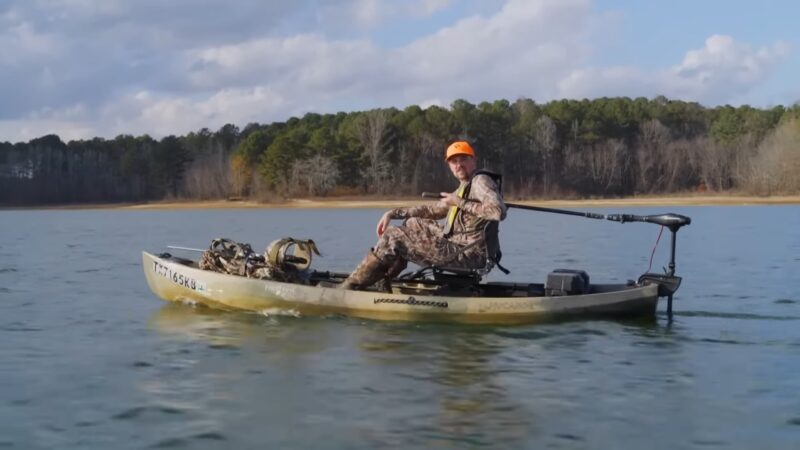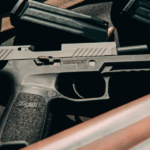Firearms are often used for hunting, self-defense, or recreational purposes. However, transporting firearms in boats poses some unique challenges and risks.
Boats are subject to movement, moisture, and theft, which can affect the safety and performance of firearms. Moreover, different jurisdictions may have different laws and regulations regarding the possession and transportation of firearms on waterways.
Therefore, it is important to follow some best practices and guidelines when carrying firearms on boats. This essay will discuss the importance of safely transporting firearms in boats and the relevance of local laws and regulations.
It will also provide some tips and recommendations for gun owners who want to enjoy boating with their firearms.
What Do Transportation Rules Say?
Transporting firearms in boats requires following some basic rules to ensure safety and legality.
Unloading and Casing Firearms
The first step before boarding a boat with firearms is to unload and case them. This prevents accidental discharge, damage, or theft of the firearms.
Unloaded and cased firearms are also easier to transport and store in the boat. Moreover, some jurisdictions may require firearms to be unloaded and cased when on waterways, so it is important to check the local laws before boating with firearms.
Ensuring Safe Conditions
Another rule for transporting firearms in boats is to keep the actions open or the guns broken down. This means that the firearms are visibly inoperable and cannot be fired.
Keeping the actions open or the guns broke down also allows for inspection and cleaning of the firearms, which may be necessary due to exposure to moisture, salt, or dirt. Furthermore, some jurisdictions may require firearms to be in this condition when on waterways, so it is important to comply with local regulations.
Firearm Positioning
The final rule for transporting firearms in boats is to position them properly in the boat. It indicates the necessity of storing firearms in a secure, conveniently reachable spot, keeping them protected from water, heat, and sharp items.
The firearms should also be placed in a way that they do not interfere with the operation or navigation of the boat. Additionally, the firearms should be positioned in a manner that they do not point at anyone or anything, as this is a basic principle of gun safety.
What are the Specific Procedures for Boarding?
To ensure safety and efficiency when boarding a boat with firearms, specific procedures must be followed.
First Person Protocol
The person who boards first should be at the front of the boat, with the firearm unloaded and securely cased. The firearm should have its action open or be broken down.
With one hand holding the firearm by the handle or strap, and the other hand grasping the side of the boat, the person should step onto the boat. It is important to keep the firearm above the water level.
Once aboard, the firearm should be placed in a secure location at the front of the boat, away from the propeller, motor, or anchor.
Second Person Protocol
For the second person boarding with a firearm, they should follow a similar protocol but board at the back of the boat, in the stern. Again, they must ensure the firearm is unloaded, and cased, with the action open or the gun broken down.
With one hand holding the firearm and the other hand grabbing the boat’s side, the person should step onto the boat, keeping the firearm above the water level. They should then store the firearm in a secure and accessible location in the stern, away from any potential hazards.
Disembarking Procedures
When it is time to disembark the boat with firearms, the procedure should be reversed. The person in the stern should be the first to exit the boat, holding the firearm securely by the handle or strap and using the other hand to grab the boat’s side.
They should step out of the boat, making sure to keep the firearm above the water level. If the firearm has not already been unloaded and cased, this should be done now, and the firearm should be stored safely and legally.
The person in the bow should then follow the same steps to exit the boat safely.
Legal Considerations
Carrying firearms in boats involves complying with various legal considerations.
Local Laws and Their Impact
Different states and localities may have different laws and regulations regarding the possession, transportation, and use of firearms on waterways. Some may require a license, permit, or registration, while others may prohibit certain types or calibers of firearms.
Others may also impose restrictions on the storage, display, or discharge of firearms on boats. Therefore, it is important to research and follow the laws of each area where you intend to boat with firearms, as well as the areas you may pass through.
Violating the local laws may result in fines, confiscation, arrest, or prosecution.
Case Study: Texas Laws
Texas is one of the states that allows qualified persons to carry handguns in their cars or boats without a license, as long as the handguns are not in plain view unless the person is 21 years of age or older or has a License to Carry (LTC) and the handgun is carried in a holster. Texas law also treats boats as vehicles to carry firearms, which means that the same rules and exceptions that apply to cars also apply to boats.
However, it also prohibits carrying a handgun on a boat if the person is engaged in criminal activity, is a member of a criminal street gang, or is prohibited by law from possessing a firearm.
Interstate Waterway Regulations
When traveling across state lines with firearms on boats, federal law provides some protection for lawful gun owners. The federal “Safe Passage” law in Section 926A, Title 18 of the U.S. Code allows travelers to carry firearms through all 50 states, Puerto Rico, and Guam under certain conditions.
The firearms must be unloaded and in a locked container, not accessible from the passenger compartment of the boat, and the possession of the firearms must be legal at the start and end of the journey. However, this law does not apply to travelers who stop or stay in a state where their firearms are illegal, or who are subject to arrest for another reason.
Therefore, it is advisable to plan your route carefully and avoid states or areas that have restrictive gun laws.
Gun Safety on Boats
When firearms are on board, constant awareness of their presence is essential. This involves regularly checking their condition and ensuring they remain securely stored.
Everyone on the boat who might handle firearms should be trained in their safe use. It includes understanding how to operate and store them properly.
Clear and continuous communication among all passengers regarding the location and status of firearms prevents misunderstandings and enhances safety.
Hunting Considerations
Hunters need to establish safe firing zones on the boat. This minimizes the risk of accidents by preventing shooting in directions where people or property might be at risk.
Strict rules should be followed for loading and unloading firearms when hunting from a boat. This includes only loading the firearm when it’s time to shoot and unloading immediately after.
Hunters must consider the boat’s stability before taking a shot. Unstable platforms can lead to inaccurate shooting and increased risk of accidents.
Emergency Preparedness
Develop and familiarize all passengers with emergency protocols in case of a firearm-related accident. This includes first-aid procedures and emergency contact plans.
Be prepared for changes in weather and water conditions, which can affect the safe handling and functioning of firearms. Regular maintenance of firearms is crucial, especially in the challenging conditions presented by marine environments.
This includes cleaning to prevent rust and checking for proper functioning.
Differentiating Water Types
Open waters are typically vast, unobstructed bodies like seas or large lakes, while obstructed waters are characterized by narrow passages, abundant vegetation, or other barriers. They often present fewer navigation hazards for boaters but require attention to weather and wave conditions.
Obstructed waters demand careful maneuvering and awareness of submerged obstacles. Open waters generally offer greater visibility and space, reducing the risk of accidents. In contrast, obstructed waters, with limited space and visibility, require heightened caution.
Relevant Regulations for Each Type
These may include specific guidelines for firearm storage and use, emphasizing the importance of safe handling in potentially unstable conditions. These might be more stringent due to the increased risks associated with narrower spaces and closer proximity to other boaters or individuals.
Regardless of the water type, adherence to local and state laws governing the transportation and use of firearms is mandatory. This ensures legal compliance and enhances overall safety.
Choosing Firearms for Boats
The choice of firearms for boat use should align with the specific activities planned, such as hunting or self-defense. Factors like the presence of saltwater, humidity, and the likelihood of exposure to water should inform the selection.
The available space for storage on the boat and ease of handling in confined spaces are key considerations when choosing a firearm.
Popularity of Handguns and Shotguns
Their small size makes handguns a preferred choice for boaters, offering ease of storage and quick accessibility. Shotguns are favored for their versatility in various situations, from hunting to self-defense, especially in environments where precision is less critical.
The effective range and stopping power of both handguns and shotguns should be weighed against the anticipated use scenarios.
Specialty Firearms with Marine Coatings
Firearms with marine coatings are designed to withstand the corrosive effects of saltwater and humid conditions, ensuring longevity and reliability. These firearms often feature stainless steel components and specialized coatings that resist rust and corrosion.
For individuals who frequently use firearms in marine settings, investing in these specialty firearms can be a practical long-term decision.
FAQ
Are there specific types of gun safes recommended for boats?
Gun safes designed for marine use are recommended. These are typically waterproof and rust-resistant, offering additional protection against the harsh marine environment. Gun safes for storage should be securely mounted to avoid any shifting or damage during rough waters, ensuring that firearms stay in place and accessible.
For reliable protection in marine environments, Guardian Safe And Vault offers top-tier gun safes specifically built to withstand the harsh conditions of water exposure and salt air. Their models come equipped with a robust 3/16″ steel plate door fortified by dual layers of fire-insulating material, which, combined with a 14-gauge solid steel body, provides enhanced durability against both environmental factors and attempted breaches.
Can I carry loaded firearms on my boat for self-defense?
It depends on the jurisdiction. Some areas may allow it under certain conditions, like having a concealed carry permit. However, in many places, firearms must be unloaded and securely stored while on a boat. Always check local laws before carrying loaded firearms.
Are there special storage requirements for firearms on boats?
Firearms should be stored in a secure, waterproof container to protect them from the marine environment. Some regions might have specific regulations about firearm storage on boats, so it’s important to be informed about local requirements.
How does traveling in international waters affect firearm laws on boats?
When in international waters, you must comply with the laws of your boat’s registered country. However, once you enter the territorial waters of another country, their laws apply. It’s crucial to know and respect the firearm laws of any country whose waters you enter.
Can I use my firearm for hunting from a moving boat?
Generally, it is illegal to shoot from a moving boat due to safety concerns. Some exceptions might exist for certain types of game or in specific jurisdictions, but as a rule, boats should be stationary when firearms are used for hunting.
Are there specific types of gun safes recommended for boats?
Gun safes designed for marine use are recommended. These are typically waterproof and rust-resistant, offering additional protection against the harsh marine environment.
How should I maintain my firearm after exposure to saltwater?
After exposure to saltwater, firearms should be thoroughly cleaned and oiled to prevent rust and corrosion. It’s advisable to disassemble the firearm for complete cleaning and check all parts for any signs of damage or wear. Regular maintenance is key in a marine setting.
Final Words
Firearms are crucial tools for hunting, self-defense, or recreation but pose unique challenges when transported in boats. The constant movement, moisture exposure, and risk of theft in marine environments necessitate stringent safety and maintenance practices.
Additionally, varying local and state regulations complicate legal compliance, especially in waters crossing jurisdictional boundaries. This essay has highlighted critical aspects of firearm transportation on boats, including safe handling, legal considerations, and the importance of selecting appropriate firearms and ammunition for marine conditions.
Adhering to these guidelines ensures both safety and legality, allowing gun owners to responsibly enjoy their activities on the water.










